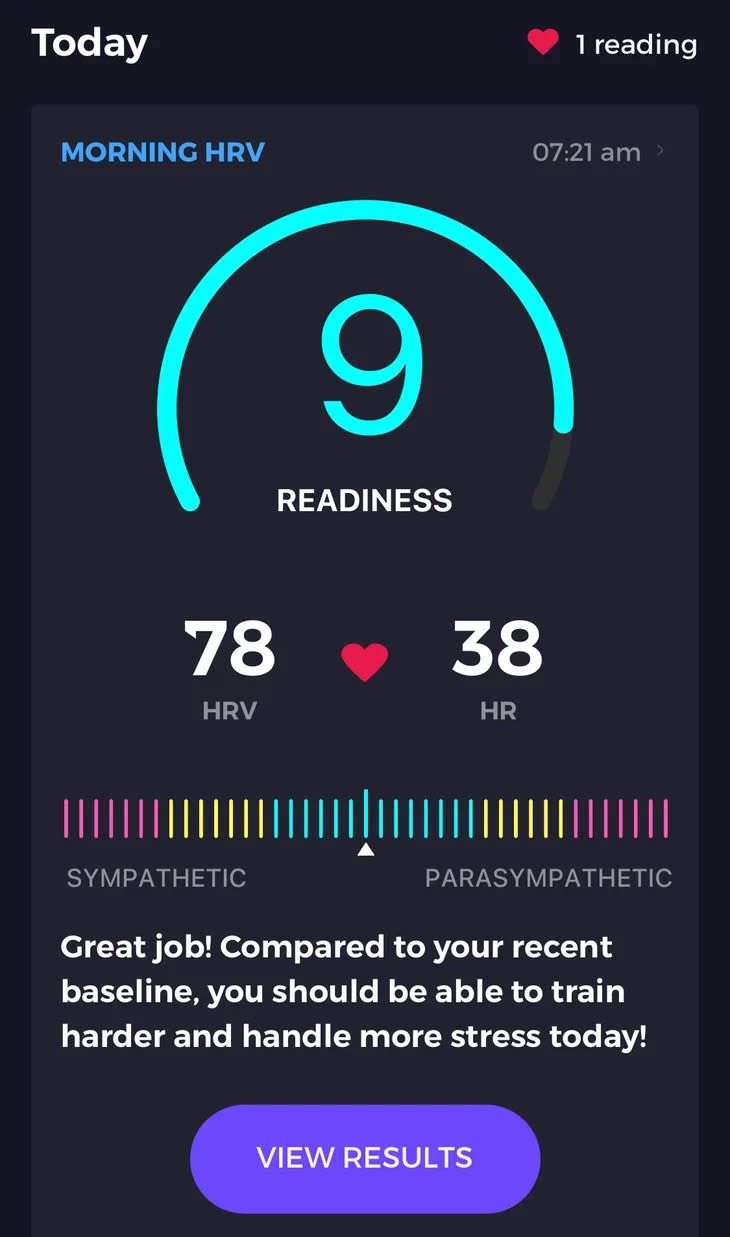Using Heart Rate Variability to Get the Most From Your Training
This article originally appeared on Trail Runner
It's no secret that rest is one of the most important parts of training, but learning to listen to your body is also one of the greatest challenges triathletes face. "Should I hit that hard workout today, even though I'm tired, or should I sleep in?" It's a thought we've all had, and it's sometimes an impossible question to answer, especially when our zeal for training clouds our ability to read subtle warning signs. But heart rate variability (HRV) is a metric that helps give you the objective data you need to make a more informed decision on whether to push it or save the tough workout for another day. Many top professionals have been using it for some time now--and with great results--and an increasing number of age-group athletes are training with it too, especially as it is a function now built into so many smart watches, such as the Apple Watch and the WHOOP.
Alan Couzens, an exercise physiologist and coach who's been in the multisport game for more than 25 years, predicated several years ago that HRV would help drive a "significant paradigm shift" when it comes to tri training. So what is HRV and why is it important?
RELATED: All You Need to Know About Training with Heart Rate Variability
"Heart rate variability reflects how strong your recovery system--the parasympathetic nervous system--is currently," he said. "When it is low, it will take the body longer to recover from hard sessions and it indicates to the athlete (and the coach) that they need to spend more time recovering. Conversely, when it is high, an athlete will bounce back from intense work much more quickly."
When it first appeared on the endurance scene, HRV could only be tracked via a lab-grade EKG assessment, but now it is a standard feature on many tri watches. "It's a huge step forward over traditional metrics, like resting heart rate," Couzens said. "It is a far more sensitive measure of the status of the autonomic nervous system."
A HRV device measures the interval between each of your heart beats, in milliseconds (m/s), over a specific period of time, e.g., the Elite HRV app asks you to record for 2.5 minutes upon waking each morning. It then crunches the numbers to assign a HRV score for that day. If the intervals between beats are about the same, your HRV score will be low, indicating you need to take it easy. If there is more variation between beats, your score will be higher--and you're ready to rock.

Couzens likened HRV to a group ride: When you're feeling fresh, there will be a good amount of variability in your power file as you move around the group and maybe sprint certain sections. When you're tired, however, you're more likely to sit on the back of the group and steadily grind at an even pace. He also warned that the accuracy of the data can vary from app to app, but apps that use heart rate chest straps tend to be most accurate.
RELATED: How Alcohol Tanks Your Heart Rate Variability and Sleep
While the latest technology will crunch the numbers and give you the most vital data, you must first get baseline HRV numbers before you can effectively implement those values. This means tracking your HRV for at least a month (during a regular training cycle) to establish what your "normal" HRV range should be. As with so many data points from training and performance, your HRV score is unique to you and highly individualized. Your HRV score will be dependent on a number of factors, such as gender, fitness, lifestyle, sleep, and genetics. Couzens said that, typically speaking, highly-conditioned athletes tend to see lower drops in HRV (when fatigued) than those who are less well-trained. So what is a "good" HRV score? WHOOP data shows that the average HRV score for WHOOP users is 65 for men and 62 for women, but this varies a lot among different age brackets (e.g., the average HRV score for 25-year-olds is 78 compared to a HRV score of 44 for a 55-year-old). Experts agree, though, that the most important point of comparison is you: Track your own HRV scores over time and with improvements in health and fitness should also come an overall rise in your HRV scores.
This article first appeared in Triathlete Magazine
For exclusive access to all of our fitness, gear, adventure, and travel stories, plus discounts on trips, events, and gear, sign up for Outside+ today.

